With the 99th and last issue, C: B_retro says goodbye to its well-deserved retirement. After 2 years, a Best of Retro marks the appropriate conclusion and climax of an unbelievably great and instructive journey into the past of computer technology and all of its protagonists, even for the author of this series.
Table of contents
- 1 C: B_retro Issue_99
- The best of 99 issues C: B_retro
- C: B_retro Die_Top_10
- Place 10: The Amiga Story
- Place 9: Sony PlayStation 2
- Place 8: Microsoft Windows XP
- 7th place: 15 years – the ideal gaming PC
- 6th place: OS/2 Warp at the speed of light
- 5th place: The hardware for Half-Life and Half-Life 2
- 4th place: The release of Microsoft Windows 95
- 3rd place: The perfect gaming PC in 2000
- 2nd place: The perfect hardware for Far Cry
- 1st place: The best games of all time
- C: B_retro Thank you
- The retro competition will follow in the next few weeks
“You should stop when it is most beautiful”, says a proverb and also on C: B_retro , the series that every Sunday offers an entertaining look back at three decades of eventful history (s) and the development (s) of the computer scene and technique, that is true. After this 99th and last edition, it's over, but a big retro competition is still on the program for ComputerBase readers in the next few weeks. More on this shortly.
“You should stop when it is most beautiful and that also applies to C: B_retro !”
C: B_retro Ausgabe_99
The best of 99 issues C: B_retro
Home computers, computer systems, game consoles, operating systems, cell phones and smartphones, games and applications, the list of topics that C: B_retro has covered over the past two years is long. Issue 99 summarizes the most popular topics again in a best of and arranges them according to categories.
C: B_retro Die_Top_10
10th place: The Amiga story
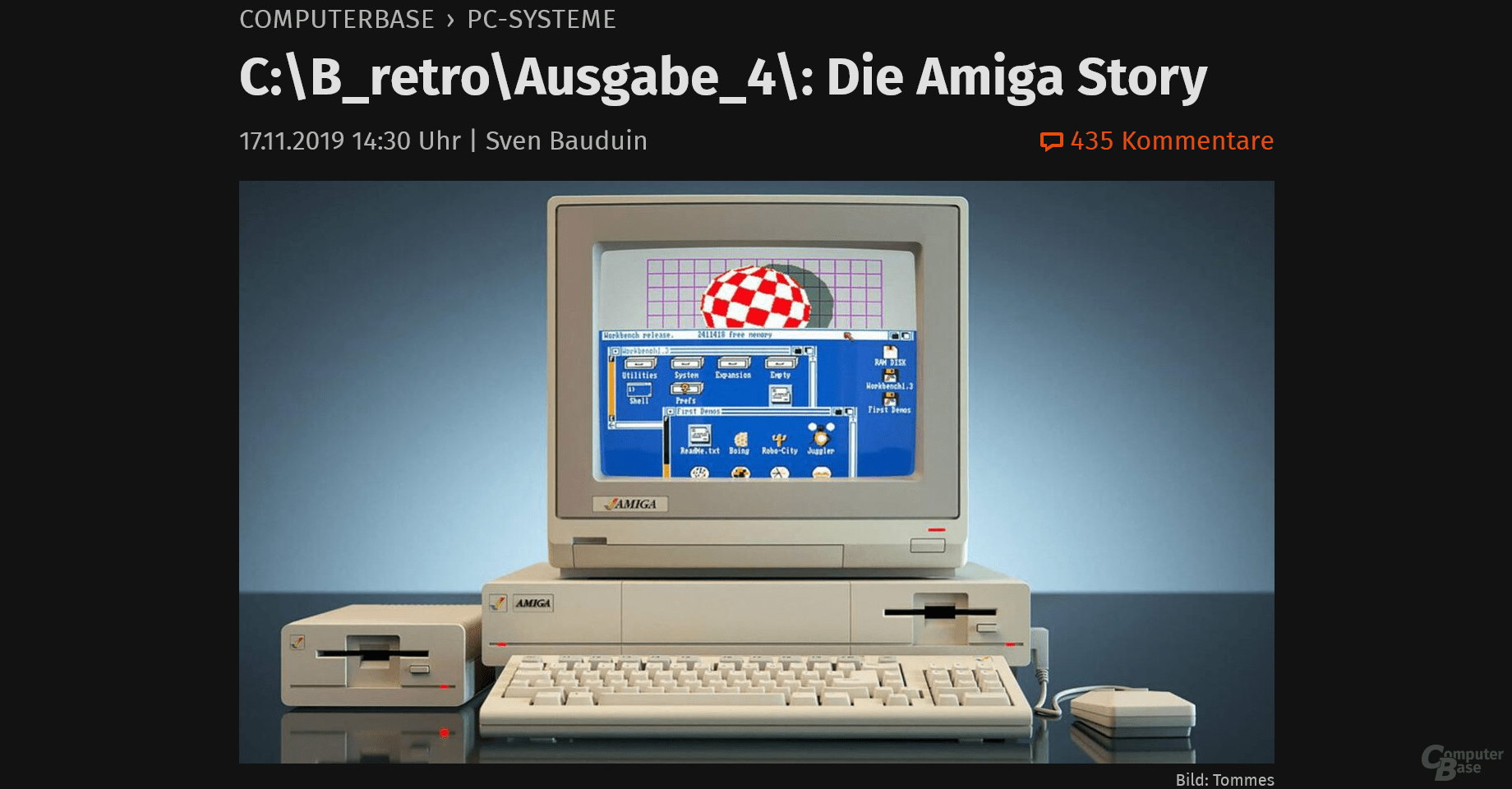 C: B_retro Ausgabe_4 : The Amiga story
C: B_retro Ausgabe_4 : The Amiga story The Commodore Amiga and its history deserved the first special from C: B_retro on November 17th, 2019 in issue 4, because obviously no topic has shaped the readers anymore. No topic was requested more often by the readers than the legendary home computer.
In the beginning, Amiga mainly supplied game modules and controllers for the Atari Video Computer System (Atari VCS), a game console , which was to become known under the name Atari 2600 from 1982 onwards.
Shortly thereafter, the company planned its own game console, which in the minds of the developers around Jay Miner, the intellectual father of the Amiga, would turn into a computer.
- C: B_retro Issue_4 : The Amiga story
More than 400 comments and countless background information subsequently testified to the great interest of the ComputerBase community in this topic.
9th place: Sony PlayStation 2
 C: B_retro Ausgabe_32 : Sony PlayStation 2
C: B_retro Ausgabe_32 : Sony PlayStation 2 On March 4, 2000, Sony released the PlayStation 2, the best-selling game console to date. Based on a greatly expanded MIPS architecture, the Emotion Engine of the PlayStation 2, jointly developed by Toshiba and Sony, enabled an enormous leap in performance compared to the PlayStation with around 300 MHz and 32 MB RDRAM. At the same time, the game console was also a DVD player, which made the PlayStation 2 even more successful.
Over a period of more than 12 years, the PlayStation 2, which was produced up to December 29, 2012, sold more than 157 million times, making it the best-selling game console worldwide and one of the greatest economic successes in the history of the Japanese electronics company Sony.
- C: B_retro Ausgabe_32 : Sony PlayStation 2
The numerous comments on issue 32 made it clear that the PlayStation 2 also shaped many readers on ComputerBase and was the first game console for many of them .
8th place: Microsoft Windows XP
 C: B_retro Ausgabe_14 : Windows XP
C: B_retro Ausgabe_14 : Windows XP With Windows XP, Microsoft released Windows NT for home users on October 25, 2001, heralding a golden era for the company and its operating system, which – after a never-before-seen dominance – only 13 years later with the departure of Windows XP (* 2001 – † 2014) should come to an end.
On January 21, 2000, the first reports reached the editors that Microsoft would launch its two upcoming projects “Neptune” – as the successor to Windows Me – and “Odyssey” – as the successor to Windows 2000 – would merge and thus merge the two development branches for private customers and companies.
As early as April 2000, the company from Redmond confirmed this plan in the person of its founder Bill Gates, who used the in-house WinHEC to announce the new “Whistler” operating system as the successor to Windows 2000.
On May 9, 2001 ComputerBase was able to officially announce that Windows XP will come on October 25, 2001. Shortly afterwards it was said that the Windows XP design is perfectly formed, which in turn promptly resulted in the first Windows XP release candidate.
- C: B_retro Ausgabe_14 : Windows XP
From October 25, 2001, Windows XP could be purchased at the following prices:
- Windows XP Home Edition (full version), 489, – DM
- Windows XP Home Edition (upgrade), 254, – DM
- Windows XP Professional Edition (full version), 679 , – DM
- Windows XP Professional Edition (Upgrade), 489, – DM
As the comments on issue 14 reflect, Windows XP was also very popular in the ComputerBase community and is fondly remembered to this day.
7th place: 15 years – the ideal gaming PC
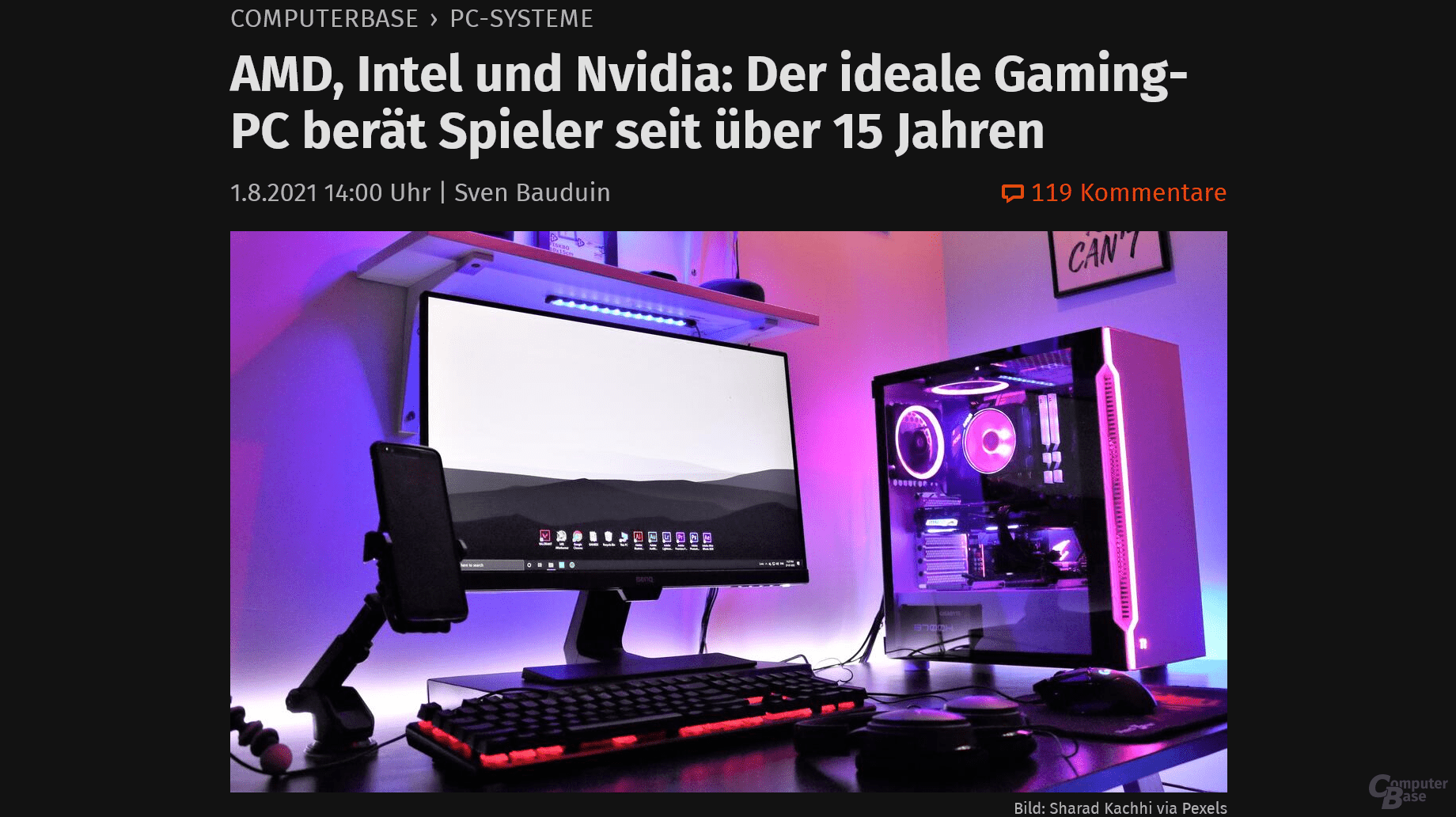 C: B_retro Ausgabe_90 : 15 years – the ideal gaming PC
C: B_retro Ausgabe_90 : 15 years – the ideal gaming PC No matter whether AMD, Intel or Nvidia, whether CPU or graphics card: The one on 25. July 2006 by community member _DJ2P-GER_ brought to life reader article: The ideal gaming PC – “Assemble your own gaming PC” has been advising players for over 15 years in the form of a FAQ in the ComputerBase forum for which the community is responsible.
On the occasion of the 15th birthday of “[FAQ] The ideal gaming PC” and its meanwhile more than 10 million page views, issue 90 of C: B_retro was dedicated to the history of this outstanding forum post, which was later continued by ComputerBase reader Campino219 and is now being looked after by the forum moderator Na-Krul.
- C : B_retro Ausgabe_90 : 15 years – the ideal gaming PC
The readers' interest in the ideal gaming PCs from the years 2006, 2011, 2015, 2017, 2019 and 2021 was great, as the comments on issue 90 show.
Seat 6: OS/2 Warp with the speed of light
With the OS/2 Warp operating system, which appeared in October 1994, IBM wanted to offer the speed of light in Internet and multimedia, as the new suffix in the product name unmistakably suggested at the time. The operating system positioned itself in direct competition with Windows 95 and failed.
The information technology of the early 1990s of the 20th century was mainly characterized by the increasing influence of the Internet, which at that time had already developed from a military tool of the US Air Force – the Arpanet – to a university network and was just preparing to also to conquer private households and companies.
The spread of the Internet was to lead to extensive upheavals in many areas of life in the years that followed and a surge in modernization that resulted in a fundamental change in communication behavior and media use in both professional and private spheres. The operating systems could not ignore this change either and became a ticket to the Internet in the mid-1990s.
On November 8, 1993 Microsoft released its Windows for Workgroups 3.11 operating system with an improved 32 -Bit network software and TCP/IP protocol that enabled communication between several computer systems in a local network and Internet access via a standard modem with AT command set at up to 19.2 kbit/s.
With OS/2 Warp, IBM wanted to put a stop to the increasingly powerful operating system from Redmond and to oppose a serious adversary who should be superior to Windows, especially in terms of Internet and multimedia use.
- C: B_retro Issue_31 : OS/2 warp at the speed of light
Originally planned as an exotic excursion away from Windows, the interest of the readers was great. A lot of interesting background information was shared in the comments on issue 31.
5th place: The hardware for Half-Life and Half-Life 2
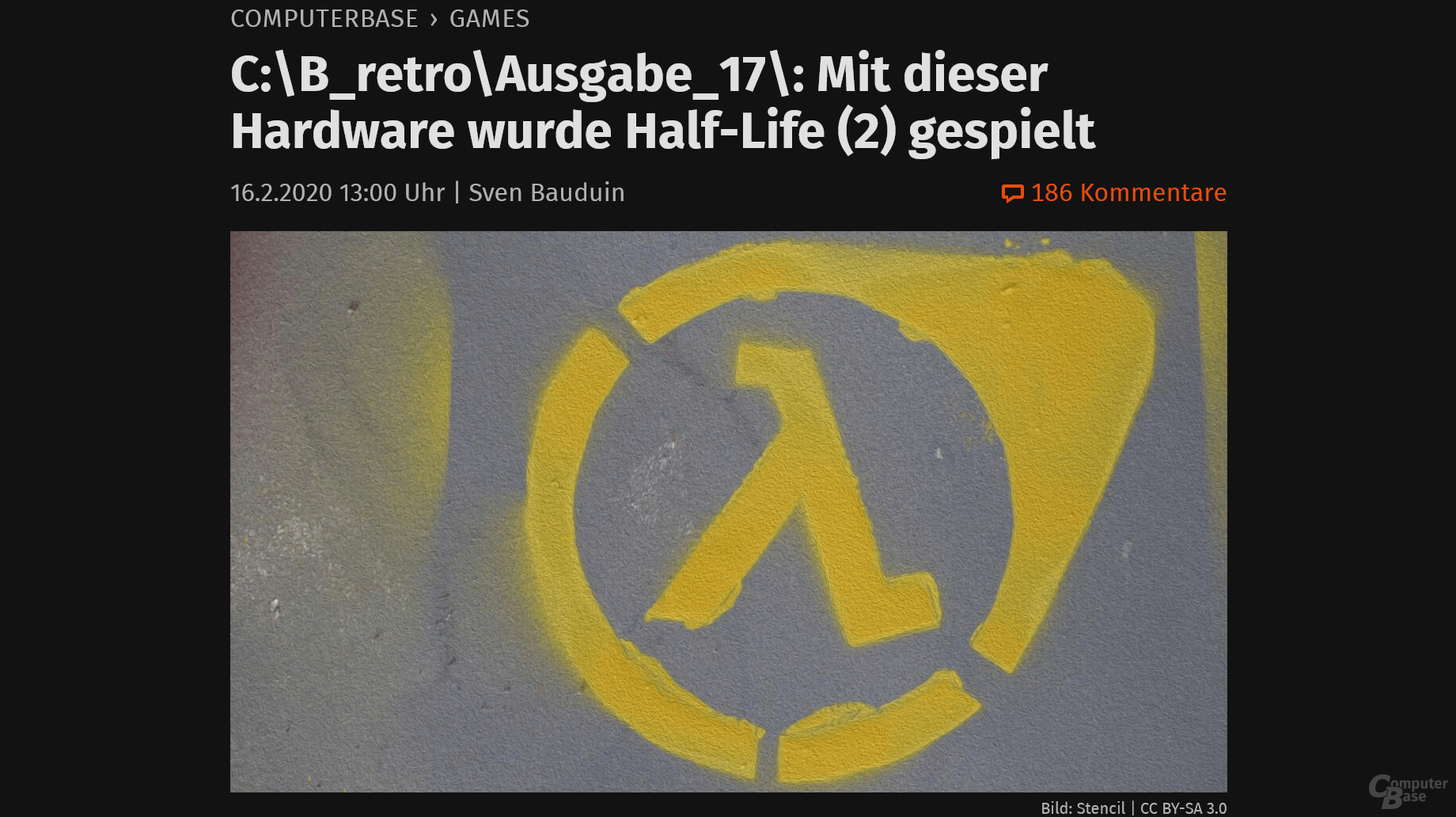 C: B_retro Ausgabe_17 : The hardware for Half- Life and Half-Life 2
C: B_retro Ausgabe_17 : The hardware for Half- Life and Half-Life 2 If it were November 19, 1998 today and Valve, through its sales partner Sierra, were to publish the groundbreaking first-person shooter Half-Life based on its own game engine Goldsource, which hardware would ComputerBase recommend? C: B_retro made a time travel on February 16, 2020 and also gave recommendations for Half-Life 2.
It starts with the legendary first-person shooter Half-Life (1998) and its no less brilliant successor Half-Life 2 (2004). What were the system requirements of the two titles at the time of their presentation, which processor you had to have at least and which graphics card was considered optimal?
- C: B_retro Ausgabe_17 : Half-Life (2) was played with this hardware
The high number of hits and numerous comments on issue 17 made it clear that ComputerBase readers also fondly remember Half-Life and Half-Life 2.
4th place: The release of Microsoft Windows 95
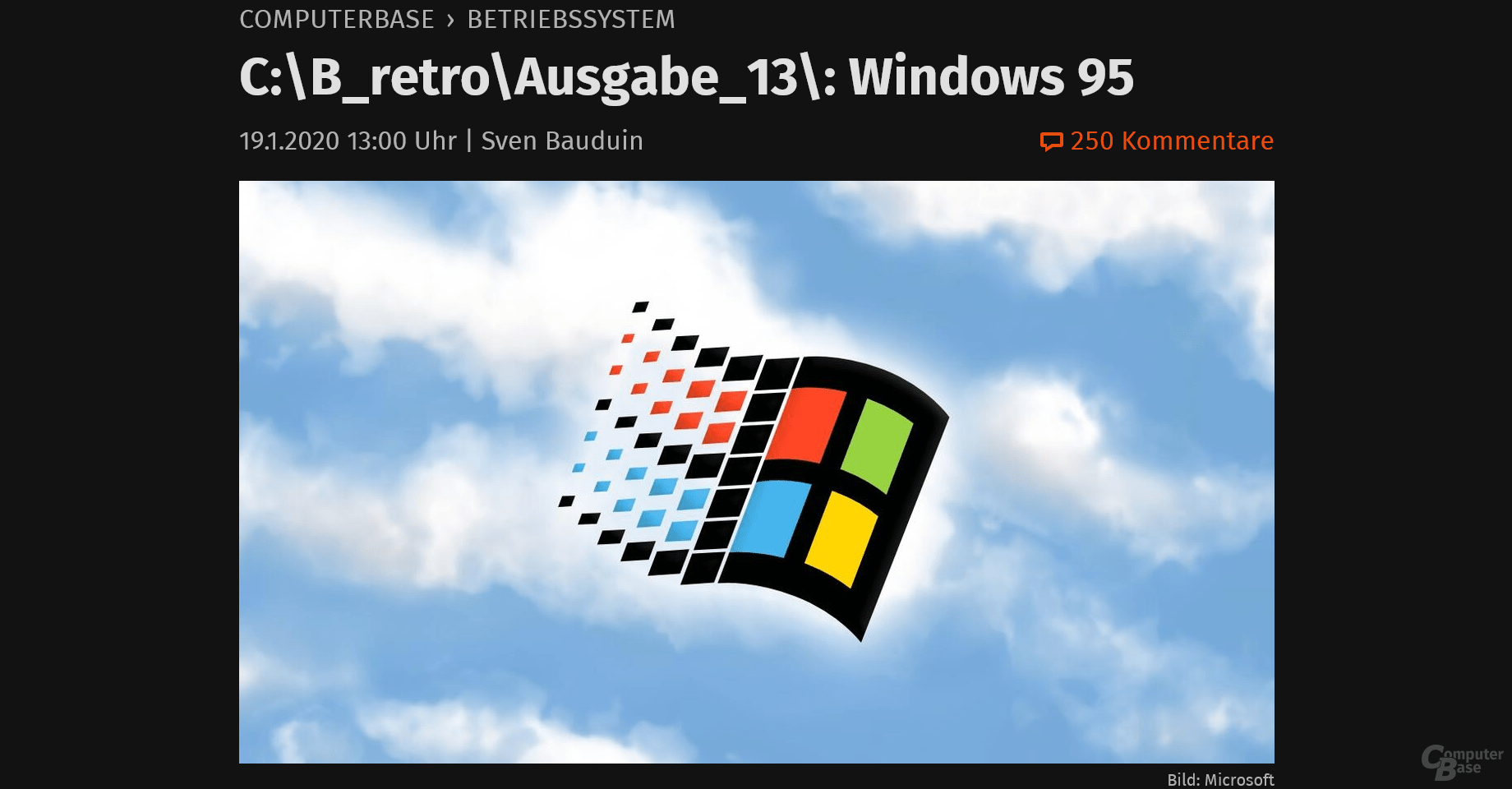 C : B_retro Ausgabe_13 : Windows 95
C : B_retro Ausgabe_13 : Windows 95 Almost a quarter of a century ago, Windows 95 appeared, an operating system that is still remembered today for its blue screens. With the successor to Windows 3.1, Microsoft presented its first 32-bit operating system, which, however, had extensive compatibility with the 16-bit MS-DOS operating system.
When Windows 95 appeared on August 24, 1995, the operating system caused a real computer fever. Microsoft itself called the launch “Midnight Madness” and PC stores in the USA opened their doors at exactly midnight and sold Windows 95 either on CD-ROM or 3.5-inch floppy disks.
The $ 200 million advertising budget had undoubtedly paid off for Microsoft, and a million copies of the operating system were sold in just four days. In the first three months, the company sold 45 million copies of Windows 95, not including pre-installed OEM versions. In view of the fact that up to 1995 only 60 million PCs were sold worldwide each year, these numbers seem all the more impressive. Microsoft itself announced that production in the press shop was delivering around one million copies of Windows 95 on CD at that time – every week.
With the largest product launch in the company's history in form In the end, the Redmond-based company did everything right with Windows 95 and was able to record a huge economic success.
- C: B_retro Issue_13 : Windows 95
The ComputerBase community also showed great interest in Windows 95 in the comments on issue 13 and had many stories to report from its own collection.
3rd place: The perfect gaming PC in 2000
 C: B_retro Ausgabe_25 : The perfect gaming PC for the year 2000
C: B_retro Ausgabe_25 : The perfect gaming PC for the year 2000 What did the perfect gaming PC look like in 2000 and which games were played with it? C: B_retro made appropriate recommendations in both cases and focused on both retro hardware and retro games from 20 years ago. From the legendary AMD Athlon K7 to the Intel Pentium III, everything was there.
Even if the perfect gaming PC looked a little different about 20 years ago than it does today, these configurations were also planned no less meticulously and every component was tested for its suitability for gaming.
AMD or Intel? ATi or Nvidia? Even back then, these decisions were more of a question of faith and sometimes caused heated discussions among enthusiasts and gamers.
The Retro Gaming Museum, which is specially geared towards retro hardware and retro games and is open to visitors around the clock, also provides beautiful impressions from this time.
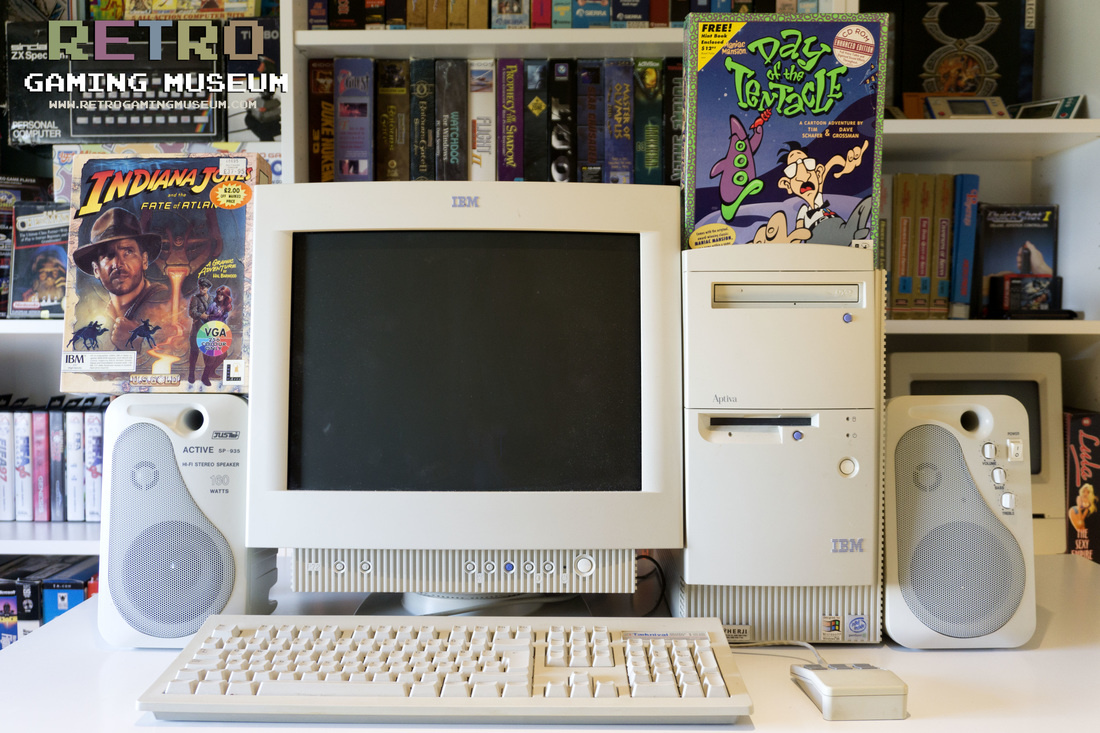 An IBM Aptiva with an Intel Pentium III 600 of the Katmai type (Image: Retro Gaming Museum)
An IBM Aptiva with an Intel Pentium III 600 of the Katmai type (Image: Retro Gaming Museum) What hardware were players allowed to choose from at the beginning of the new millennium and what are the recommendations? The main protagonists back then were AMD and Intel as well as ATi, Nvidia and also 3dfx.
Athlon K7, Pentium III, GeForce 256 and theirs fought the battle for the place in the computer gamer's case Successor of the GeForce 2 series as well as the 3rd and 4th generation of the 3dfx Voodoo and the Radeon forerunner Rage 128.
- C: B_retro Ausgabe_25 : The perfect gaming PC for the year 2000
Around the turn of the millennium, many of ComputerBase readers experimented with their own gaming PC themselves, as the comments on issue 25 show.
2nd place: The perfect hardware for Far Cry
If it were March 23rd, 2004 and Ubisoft developed Far Cry based on the groundbreaking CryEngine would publish, which hardware would ComputerBase recommend?
C: B_retro made another time travel and gave recommendations for the legendary first person shooter Far Cry.
The genre of the first person shooter has repeatedly set new standards in terms of game graphics in the past and has shown how contemporary hardware can be pushed to its limits “playfully”.
The real blueprint and reference for every “hardware killer” is still Crysis (test), which with its CryEngine 2 already assumed an absolute high-end PC in November 2007.
After Half-Life and Half-Life 2 were able to show once again in the hardware test what kind of “hardware eater” they once were, the current issue is devoted to another first-person shooter, which by using the latest technology, like DirectX 9.0c and the Shader-Model 3.0, achieved a graphic quality that had never been seen before.
We are talking about Ubisoft's Far Cry, which, based on the first CryEngine and by means of bump mapping, pixel shader 2.0 and vertex shader 2.0, was characterized by its realistic water display and great visibility.
But what were the system requirements of the title at the time of its publication, which processor must the player have at least and which graphics card was considered optimal?
- C: B_retro Ausgabe_28 : Far Cry was played with this hardware
The first Far Cry is one of the most popular games of the ComputerBase community, which is also impressively proven by the numerous comments on issue 28.
1st place: The best games of all time
Now the “PC Master Race”, Amiga fans and console players are equally in demand: Which are the best video games of all time? In this edition of C: B_retro , designed as a reader survey, ten of the largest video games across all platforms were presented. There were hundreds of great titles to choose from.
 C: B_retro Ausgabe_87 : The best games of all time
C: B_retro Ausgabe_87 : The best games of all time If only the sales figures are used, the winner's podium is already firmly established. With the Tetris, which appeared in 1984 and has sold more than 495 million times on over sixty platforms, a real classic has secured first place. In second and third place are Minecraft, which has sold 200 million copies, and the evergreen Grand Theft Auto V.
But in the reader survey it is not necessarily about the most successful video games to date, but about the best video games of all time on the Amiga, PC and game consoles platforms from the point of view of ComputerBase readers.
- C: B_retro Ausgabe_87 : What are the best video games of all time?
A corresponding evaluation of the titles mentioned by the community took place a little later.
- C: B_retro Ausgabe_89 : Your best games of all time have been selected
Half-Life 2, Grand Theft Auto: San Andreas and The Witcher 3: Wild Hunt secured the first three places in the favor of the ComputerBase community.
With more than 800 comments, issue 87 is not only the most commented issue of C: B_retro , but also received the most hits and thus secured first place.
C: B_retro Dankeschön
The retro competition will follow in the next few weeks
After 99 issues, the series C: B_retro says goodbye, but will return again in the next few weeks for a nice retro competition, in which ComputerBase readers will find a real retro PC with Pentium II and a SLI team consisting of two 3dfx Voodoo 2.
The editors will publish more information about the competition in the coming weeks. The author of this series would like to thank all readers and retro fans for the great support and the numerous comments and background information.